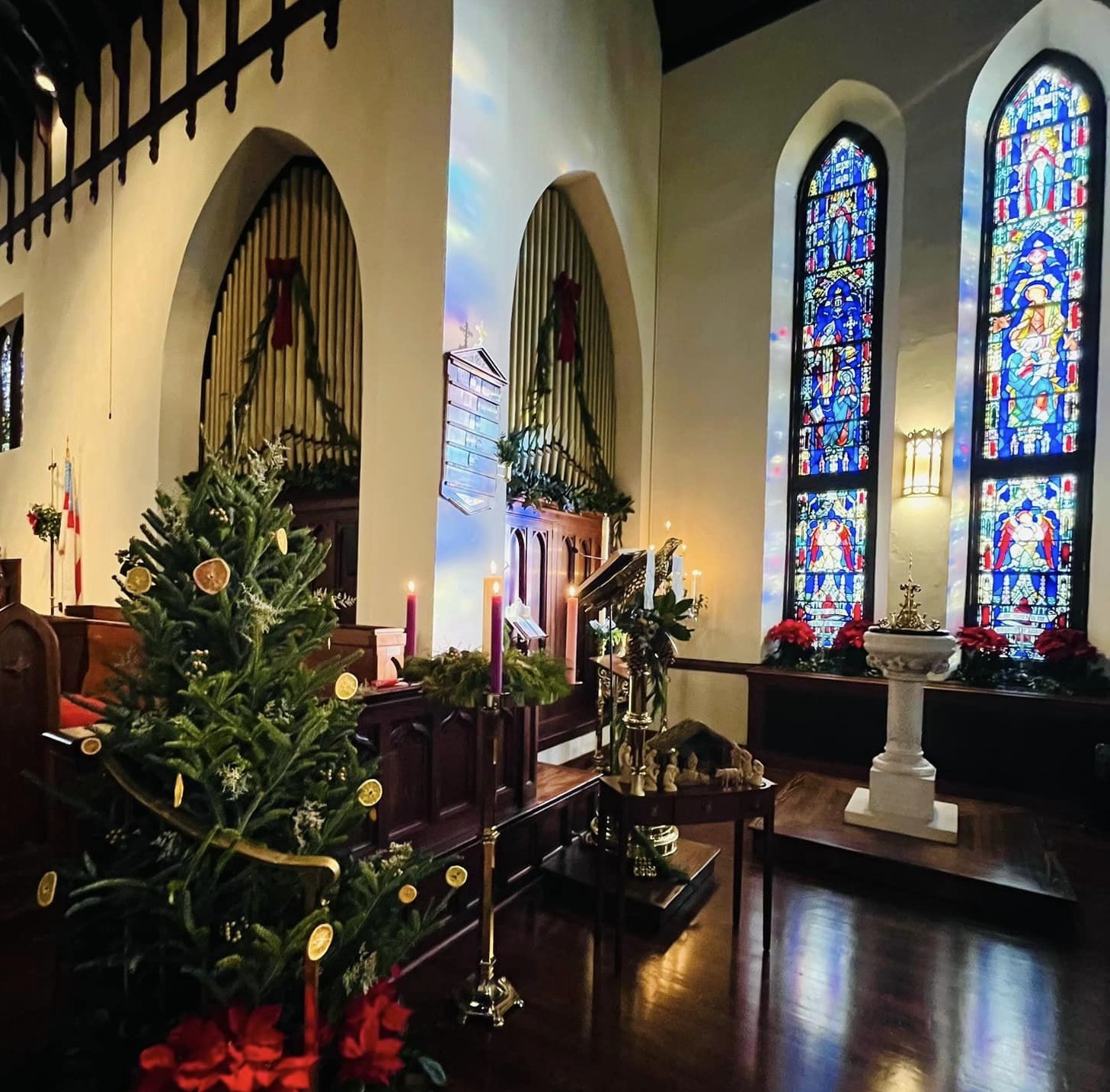
The Episcopal Church is a liturgical church, and one aspect of that heritage is an understanding of time as sacrament, which means its worship changes according to the season of the church year.
“The whole year, from its beginning on the First Sunday in Advent (four Sundays before Christmas Day) to its close at the end of November, has been arranged and presented to assist worshippers to devote their attention in succession to the salient aspects of the Christian mystery: preparation, incarnation, revelation, the life and death of Jesus of Nazareth, his resurrection and ascension, the coming of the Holy Spirit, and the life of the church and of Christians in the world,” write Charles P. Price and Louis Weil in Liturgy for Living (pg. 159).
Advent and Christmas
We start the Christian year in Advent, the four weeks prior to Christmas. Advent is a time of preparation and waiting for the incarnation of God at Christmas in the person of baby Jesus. Christmas Eve is the fruition of Advent, a time of celebration that Jesus is in fact, Emmanuel, or God-with-us.
Shortly after Christmas, on January 6th, we celebrate the Feast of Epiphany, the date we remember when the Wise Men from the East after a long journey arrived to meet Jesus and shower him with gifts. The following Sunday we celebrate the Baptism of Our Lord and Savior, a fast forward chronologically to when Jesus was baptized, annointed with the Holy Spirit, and began his earthly ministry as God’s chosen one.
Lent
Ash Wednesday starts the season of Lent 40 days before Easter. Lent is a time of introspection, discipline, and repentance. People often give up a common vice or pleasure like alcohol, caffeine, sweets or meat during Lent. Lenten disciplines such as these are intended to bring one closer to God by revealing how we lean on other things to distract us from or obscure the presence of God in our lives. When we take away such a pleasure or a habit, we find we must rely on God to help us through the day. Whatever will accomplish this can be considered a Lenten discipline. We repent and attempt to grow closer to God during Lent as a way to respond to the grace and forgiveness of God which we will celebrate at Easter.
Holy Week and Easter
The last week of Lent, Holy Week, relives the drama of Jesus’ last moments of earthly ministry. On Palm Sunday Jesus rides into Jerusalem on a donkey. People fawn him with palm branches and lay their coats down along the muddy path, believing him to be a leader who may save them from the Roman oppression. By Maundy Thursday, known as Commandment Thursday, Jesus knows that he will soon be arrested by the Roman authorities on charges of religious insurrection and he spends a final night with his disciples, instituting the Holy Eucharist at the Last Supper. He demonstrates great humility and washes their feet and asks them to do the same, to serve one another in His name. On Good Friday Jesus is confronted with the authorities’ charges and, while not found guilty by Pontious Pilate his judge, is still sentenced to crucifixion. The day is called Good Friday because Jesus needed to give up his life in order to become the salvation of the world.
The Feast of Easter commemorates Jesus’ resurrection from the dead three days after Good Friday. He appears in bodily form to the women who tended to his burial, as well as to his disciples several times before ascending into Heaven forty days after his resurrection. Eastertide is a time of grace, a time of figuring out who Jesus is in his risen form and how he engages with us still.
Pentecost
Eastertide ends with the Feast of Pentecost, when the Holy Spirit came down among the disciples and enabled them to speak in tongues and inspired them to ministry. This moment is considered the birth of the Church. Jesus had promised his disciples that after his Ascension, God the Father would send the Holy Spirit to be with them as a continuation of God’s presence on earth.
The Season after Pentecost is called Ordinary Time, in which there is no particular theme to the church’s worship but rather a focus on the everyday. This season lasts from the beginning of summer up until the start of Advent in late November. There is one major feast during Ordinary Time, All Saints’ Sunday, when we commemorate the life and tradition of the church and all those beloved saints who have passed. On All Saints Sunday we baptize new members, celebrate Communion Prep with our third graders, further incorporating them into the Body of Christ, and remember those in our community who have died in the past year. We focus on how, through participation in the church and acceptance of Jesus Christ as our savior, we are continually being sanctified and made into saints.
“Every year we cycle through the seasons from Advent through the Season after Pentecost, and with every repetition their meaning becomes more textured—richer, deeper, more subtle and complex. Sometimes a particular season will stand out for us in a given year and its message will take on fresh significance, while we speed through another, almost without noticing its passing. The repetition is the key to their gift of grace in our lives.”-Vicki Black in Welcome to the Church Year: An Introducing to the Seasons of the Episcopal Church, pg. 1.

